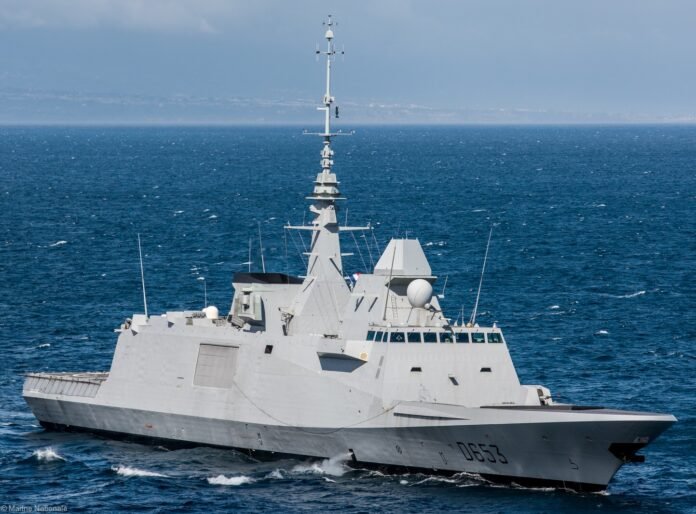
France’s maritime commander for the Indian Ocean, Vice Adm. Emmanuel Slaars, has defended the use of million-euro missiles to counter drone attacks by Yemen’s Houthi rebels in the Red Sea.
The Languedoc frigate, patrolling the southern Red Sea in December, successfully intercepted multiple drones using Aster 15 missiles, emphasizing the strategic importance of safeguarding lives and assets and countering the evolving sophistication of the drone threat.
The cost of the Aster 15 missiles, estimated at around €1 million ($1.1 million) each, has raised eyebrows among defence analysts.
However, Vice Adm. Slaars argued that the economic calculus should consider the value of what is being protected rather than just the cost of the interceptors.
In a press briefing on January 11, he stated, “The cost is not that of the missile we use, but the cost of what we protect.”
The Languedoc’s use of Aster 15 missiles in December highlights the increasing threat posed by Houthi rebel drones in the region.
The British Royal Navy’s HMS Diamond has also employed these high-cost missiles to defend against drone attacks in the same area, reflecting a shared concern among Western navies regarding the proliferation of inexpensive yet potentially devastating drones on the battlefield.
The challenges presented by cheap drones have become a focal point for Western navies, whose missile-based air defence systems are known for their effectiveness but come with a substantial price tag.
Defence analysts caution that the economic balance of ultra-capable interceptors, initially designed to counter expensive anti-ship missiles or manned aircraft, becomes less appealing when faced with the affordability of drones, which often cost only thousands of dollars.
Vice Adm. Slaars underlined the importance of countering the drone threat, stating that there was “no doubt” the Languedoc was targeted in the early December incident.
The frigate successfully deployed MBDA’s Aster 15 missiles to neutralize two drones approaching from a hostile direction.
The strategic significance of protecting maritime assets, international shipping lanes, and the lives of military personnel must be weighed against the financial considerations of missile usage.
As drone technology continues to evolve and become more accessible, navies worldwide face the complex task of effectively adapting their defence strategies to counter these agile and cost-effective threats.
The ongoing commitment of naval forces, such as the French and British fleets in the Red Sea, to invest in sophisticated missile systems reflects the urgency and gravity of the evolving threat landscape, where the potential impact on security and stability outweighs the immediate financial costs incurred.
The debate over the economic viability of missile defence against drones is likely to persist as militaries seek innovative solutions to safeguard their interests in an ever-changing geopolitical environment.
This article was created using automation technology and was thoroughly edited and fact-checked by one of our editorial staff members